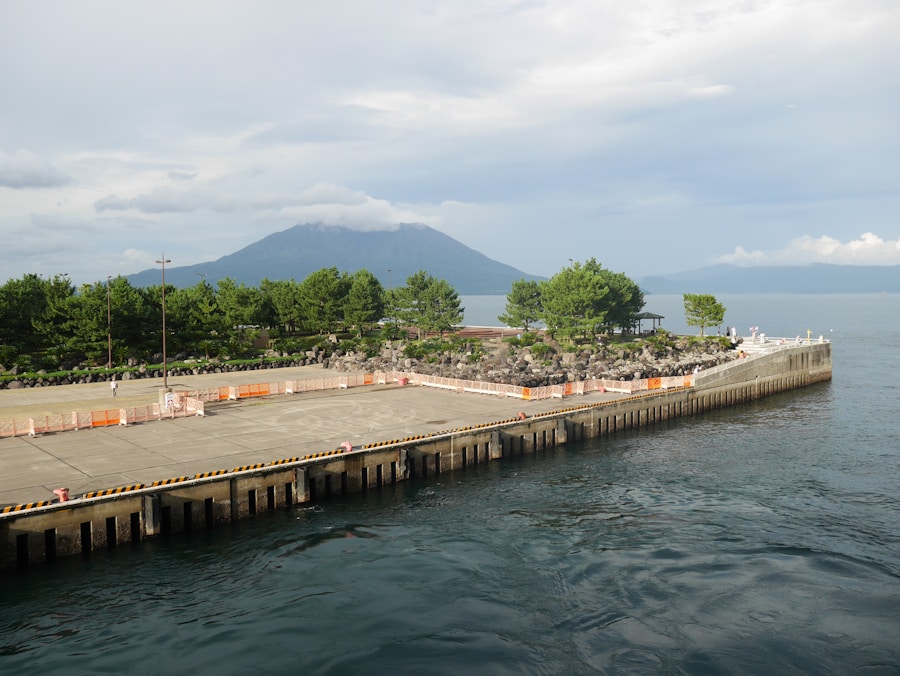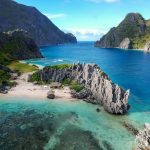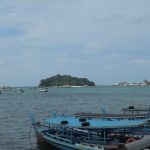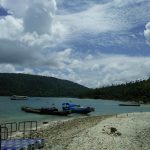Download links
How to install Exploring the Beauty of Sebu Island APK?
1. Tap the downloaded Exploring the Beauty of Sebu Island APK file.
2. Touch install.
3. Follow the steps on the screen.
Description
Sebu Island, a hidden gem in the Philippines, is part of the larger province of South Cotabato. Nestled in the heart of Mindanao, this island is often overshadowed by its more famous neighbors, yet it boasts a unique charm that captivates those who venture to explore its shores. The island is characterized by its lush landscapes, pristine waters, and a rich tapestry of cultural heritage that reflects the diverse influences of its indigenous peoples and colonial history.
Sebu Island is not just a destination; it is an experience that immerses visitors in the natural beauty and vibrant traditions of the region. The island’s geographical features are as varied as its cultural offerings. With rolling hills, verdant forests, and stunning coastlines, Sebu Island presents a picturesque setting for both relaxation and adventure.
The local population, primarily composed of the T’boli and Blaan tribes, adds a layer of depth to the island’s identity, showcasing traditional practices that have been preserved over generations. As travelers arrive on Sebu Island, they are greeted not only by breathtaking scenery but also by the warm hospitality of its residents, making it a welcoming haven for those seeking an authentic Filipino experience.
Key Takeaways
- Sebu Island is a beautiful destination known for its natural wonders, cultural sites, outdoor activities, and culinary delights.
- The island is home to stunning natural wonders such as waterfalls, caves, and pristine beaches, making it a paradise for nature lovers.
- Sebu Island also boasts a rich cultural and historical heritage, with ancient sites, traditional villages, and vibrant festivals to explore.
- Outdoor enthusiasts can enjoy a variety of activities on the island, including hiking, diving, snorkeling, and island hopping.
- Food lovers will delight in the culinary delights of Sebu Island, with its fresh seafood, tropical fruits, and unique local dishes. When exploring Sebu Island, be sure to immerse yourself in the local culture, take advantage of outdoor activities, and indulge in the delicious cuisine.
Natural Wonders of Sebu Island
Sebu Island is renowned for its natural wonders, which include breathtaking landscapes and diverse ecosystems. One of the most striking features is Lake Sebu, a stunning body of water surrounded by lush hills and vibrant flora. This lake is not only a visual marvel but also serves as a vital resource for the local communities.
Another remarkable natural attraction on Sebu Island is the Seven Falls, a series of cascading waterfalls that create a spectacular sight as they tumble down rocky cliffs into crystal-clear pools below.
Each waterfall has its own unique character, with some offering gentle streams while others plunge dramatically into deep basins. The trek to reach these falls is an adventure in itself, winding through dense forests and offering glimpses of the island’s rich biodiversity. Birdwatchers will find this area particularly rewarding, as the lush vegetation provides a habitat for various avian species, including the endemic Philippine Eagle.
The Seven Falls not only showcases the island’s natural beauty but also serves as a reminder of the importance of conservation efforts to protect these precious ecosystems.
Cultural and Historical Sites on Sebu Island

The cultural heritage of Sebu Island is deeply intertwined with its history, and several sites reflect this rich tapestry. One notable location is the T’boli Museum, which offers insights into the lives and traditions of the T’boli people. The museum houses artifacts, traditional clothing, and intricate beadwork that showcase the artistry and craftsmanship of this indigenous group.
Visitors can learn about the T’boli’s unique practices, such as their traditional weaving techniques and their connection to nature through their spiritual beliefs. Engaging with local artisans at the museum provides an opportunity to appreciate the cultural significance of their work while supporting sustainable tourism. Another significant historical site is the old Spanish-era church located in the heart of Sebu Island.
This church stands as a testament to the colonial past of the Philippines and reflects the architectural style prevalent during that era. The structure’s weathered stone walls and intricate woodwork tell stories of faith and resilience, having withstood the test of time. Local festivals often take place in and around this church, where traditional music and dance performances celebrate both religious and cultural heritage.
These events provide visitors with a chance to witness firsthand the vibrant community spirit that thrives on Sebu Island.
Outdoor Activities on Sebu Island
| Activity | Number of Tourists | Popular Locations |
|---|---|---|
| Hiking | 10,000 | Osmeña Peak, Mount Manunggal |
| Snorkeling | 8,000 | Moalboal, Pescador Island |
| Scuba Diving | 5,000 | Malapascua Island, Moalboal |
| Beach Camping | 3,000 | Bantayan Island, Camotes Island |
For those seeking adventure, Sebu Island offers a plethora of outdoor activities that cater to various interests. Hiking enthusiasts can explore numerous trails that wind through the island’s lush landscapes, leading to breathtaking viewpoints overlooking Lake Sebu and its surrounding hills. One popular trail takes hikers to a vantage point known as “The View Deck,” where they can enjoy panoramic vistas while breathing in the fresh mountain air.
The trails vary in difficulty, making them accessible to both novice hikers and seasoned trekkers looking for a challenge. Water-based activities are also abundant on Sebu Island. The calm waters of Lake Sebu provide an ideal setting for fishing, boating, and swimming.
Local fishermen often offer guided fishing tours, allowing visitors to experience traditional fishing methods while learning about sustainable practices that protect the lake’s ecosystem. For those who prefer a more leisurely experience, boat tours around the lake reveal hidden coves and secluded spots perfect for picnicking or simply soaking up the sun. Additionally, snorkeling opportunities abound in nearby coral reefs, where vibrant marine life thrives beneath the surface.
Culinary Delights of Sebu Island
The culinary scene on Sebu Island is a delightful fusion of flavors that reflects both local ingredients and traditional cooking methods. One must-try dish is “Tiyula Itum,” a traditional beef soup that features a rich blend of spices and herbs, often served with rice or traditional flatbreads. This dish exemplifies the island’s culinary heritage and showcases the use of locally sourced ingredients that contribute to its unique taste profile.
Visitors can find this dish in local eateries or during community gatherings where families come together to share meals. Another culinary highlight is “Sebu’s Sweets,” which includes various delicacies made from rice flour, coconut milk, and sugar. These sweet treats are often enjoyed during festivals or special occasions and are a testament to the island’s agricultural bounty.
Local markets offer an array of these sweets, allowing visitors to indulge in flavors that are both familiar and distinctively regional. Engaging with local chefs or participating in cooking classes can provide deeper insights into these culinary traditions while fostering connections with the community.
Tips for Exploring Sebu Island

Exploring Sebu Island requires some preparation to ensure a fulfilling experience. First and foremost, it is advisable to plan your visit during the dry season, which typically runs from March to May. This period offers pleasant weather conditions ideal for outdoor activities such as hiking and boating.
Additionally, early mornings or late afternoons are perfect for exploring natural attractions like Lake Sebu or Seven Falls when temperatures are cooler and lighting is optimal for photography. When navigating the island, consider renting a motorbike or hiring a local guide who can provide valuable insights into hidden gems off the beaten path. Engaging with local residents not only enhances your understanding of their culture but also supports sustainable tourism practices that benefit the community.
Lastly, be respectful of local customs and traditions; participating in community events or festivals can enrich your experience while fostering goodwill between visitors and residents. In conclusion, Sebu Island offers an array of experiences that cater to nature lovers, adventure seekers, and cultural enthusiasts alike. Its natural wonders, rich history, outdoor activities, culinary delights, and warm hospitality create an unforgettable journey for those willing to explore this enchanting destination in the Philippines.
FAQs
What is Sebu Island?
Sebu Island is an island located in the Philippines, specifically in the Visayas region. It is the second largest island in the Philippines and is known for its beautiful beaches, rich marine life, and vibrant culture.
What are the popular attractions in Sebu Island?
Some popular attractions in Sebu Island include the historic Magellan’s Cross, the stunning Kawasan Falls, the vibrant Sinulog Festival, and the beautiful beaches of Bantayan Island and Malapascua Island.
What is the climate like in Sebu Island?
Sebu Island has a tropical climate with two distinct seasons: the dry season from November to April and the wet season from May to October. The island experiences warm temperatures throughout the year, making it an ideal destination for beachgoers.
What activities can visitors do in Sebu Island?
Visitors to Sebu Island can enjoy a wide range of activities such as snorkeling, diving, island hopping, hiking to waterfalls, exploring historical sites, and experiencing the local culture through festivals and traditional performances.
How do I get to Sebu Island?
Sebu Island is accessible by air through Mactan-Cebu International Airport, which is the second busiest airport in the Philippines. There are also ferry services that connect Sebu Island to other islands in the Philippines. Once on the island, visitors can use taxis, buses, and motorcycles to get around.





